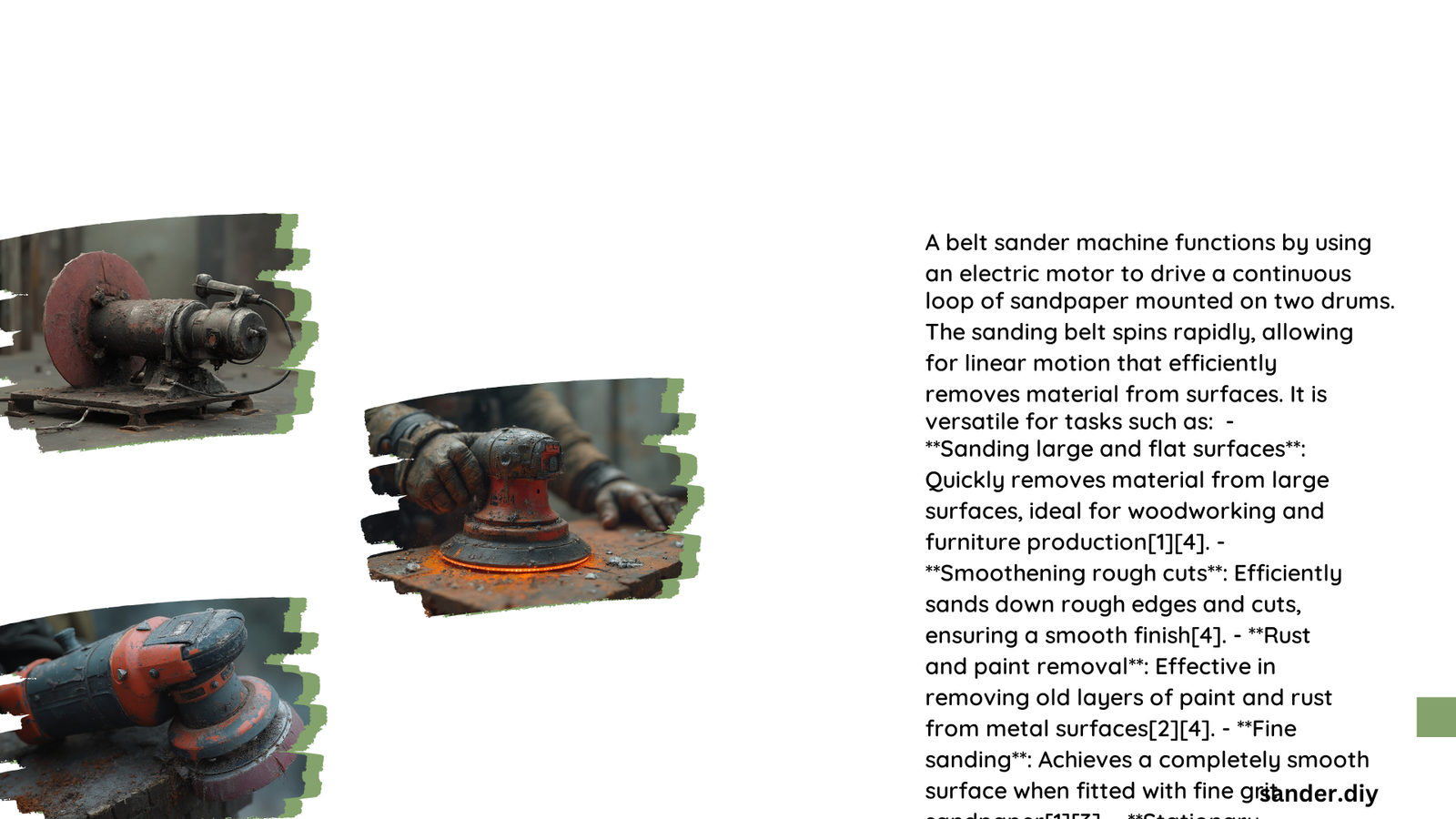Belt sanders represent sophisticated industrial machines designed to transform raw material surfaces through precise abrasive belt technology. These powerful tools utilize continuous looped abrasive belts driven by robust motors, enabling high-speed material removal and surface refinement across multiple industrial sectors. By integrating advanced mechanical engineering principles, belt sanders deliver exceptional precision, efficiency, and consistent performance for complex manufacturing processes.
What Makes Belt Sander Machines Unique?
How Do Belt Sanders Operate?
Belt sander machines function through a sophisticated mechanism involving several critical components:
Core Mechanical Components
- Abrasive Belt: Continuous looped sandpaper
- Drive Rollers: Rotate and tension the belt
- Motor: Provides rotational power
- Conveyor System: Moves workpiece consistently
| Component | Function | Performance Characteristic |
|---|---|---|
| Motor | Power Generation | 15 HP, 230V/460V |
| Belt | Material Removal | Variable Grit Sizes |
| Tracking System | Precision Alignment | Electronic Eye Tracking |
What Are Primary Belt Sander Applications?
Belt sanders excel in multiple industrial domains:
Woodworking Applications
- Furniture manufacturing
- Panel smoothing
- Flooring preparation
- Custom cabinetry finishing
Metalworking Capabilities
- Surface preparation
- Precision grinding
- Component refinement
- Industrial part manufacturing
How Do Professionals Optimize Belt Sander Performance?
Successful belt sander operation requires strategic techniques:
- Material Selection
- Choose appropriate grit size
- Match belt material to workpiece
-
Consider surface finish requirements
-
Operational Techniques
- Maintain consistent pressure
- Control feed rate
- Monitor belt temperature
- Implement proper dust collection
What Technical Specifications Matter?
Critical technical parameters include:
- Motor Power: 10-25 HP range
- Belt Dimensions: 4″ x 24″ to 52″ x 103″
- Speed Range: 1000-3000 SFPM
- Voltage: 230V/460V three-phase
What Challenges Do Operators Face?
Common belt sander challenges include:
- Heat buildup
- Belt tracking issues
- Premature belt wear
- Surface inconsistency
How Can Operators Mitigate Performance Limitations?
Recommended mitigation strategies:
– Regular maintenance
– Proper belt selection
– Consistent lubrication
– Advanced tracking systems
– Professional training
Conclusion

Belt sander machines represent sophisticated engineering solutions enabling precise material transformation across diverse industrial applications. By understanding their complex functionality, operators can maximize performance and achieve exceptional surface finishing results.
